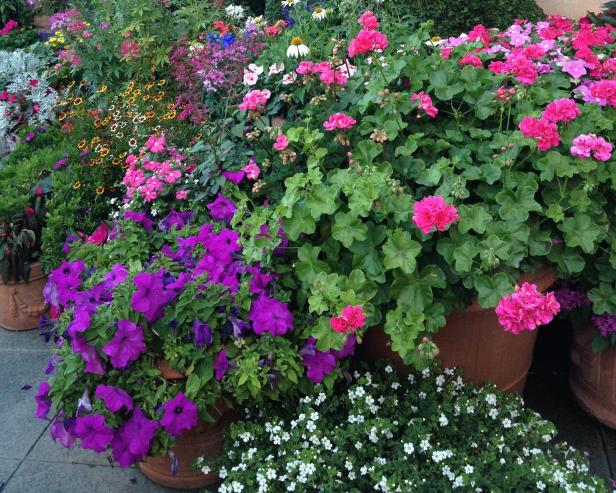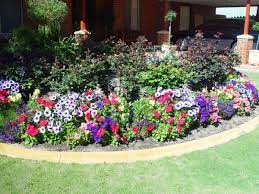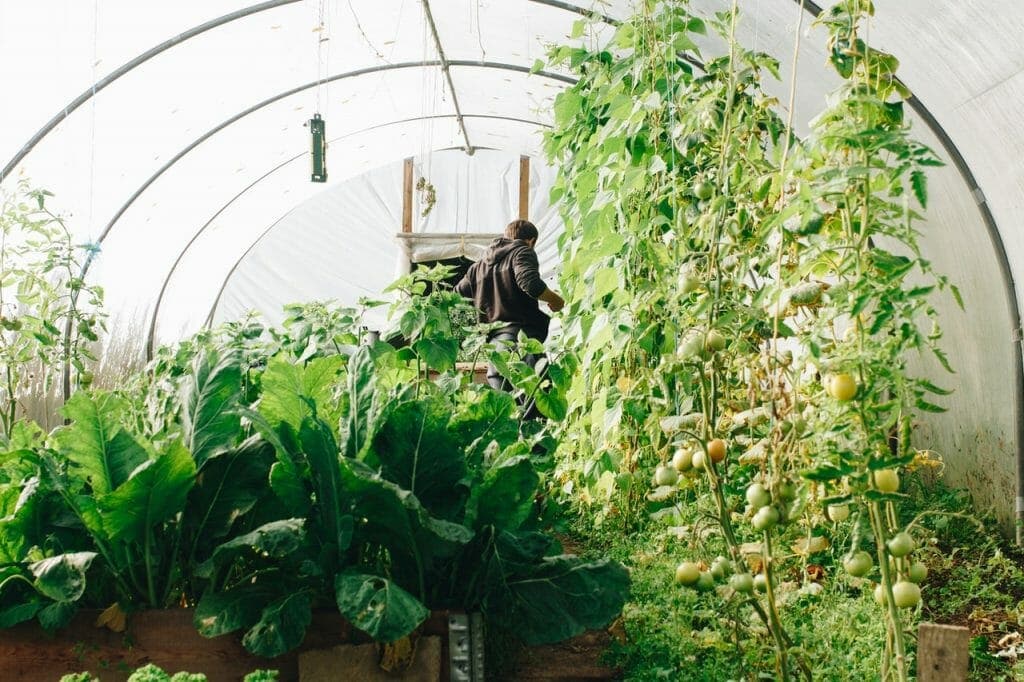Written by Julie Martens Forney and published on https://www.hgtv.com/
If you wanted to grow annual flowers, your choices were limited to geraniums, impatiens, marigolds and red salvia. But today, most greenhouses offer an eyecatching array of choices. Whether you’re planting a windowbox, lining your sidewalk, or spicing up your perennial garden, here’s how to make the most of what’s available.
Annual plants germinate, grow, flower, set seed and die all in one growing season. The first frost usually signals the end of the season for annuals and most need to be replanted each year. Some will set seed if the flowers are left to produce seed heads and return the following year.
How To Choose, Plant And Grow Annuals
Add a burst of seasonal color to your garden with easy-to-grow annuals.

Photo by Lynn CoulterPetunias, geraniums and many other easy-to-grow annuals come in a rainbow of colors that range from bold and bright to pale and pastel. Use them in masses for a big impact, even in small spaces.
Annuals are plants that live for only one growing season, like yellow zinnias or sunflowers, scarlet begonias or orange marigolds. Plants grown primarily for foliage can be annuals, too, including coleus and sweet potato vines.
These plants are great choices for gardens and containers, because most are inexpensive, giving you lots of color for your money.
Tender annuals are plants that die or suffer damage when they’re hit by frost, or when temperatures hover around 32 degrees F. Wait until the temperature is 55 degrees F or above to grow them.
Hardy annuals can take some freezing weather. They’ll die when the temperatures remain at or below freezing.
Half-hardy annuals can take light frost or temperatures in the 35 to 45 degree F range for short periods of time. Examples are petunias and cosmos.
Choose Your Annuals
Before you grab a trowel, take a few days to watch the sun move across your garden spot. Does it get sun, shade or something in between? Read plant tags so you can choose the ones that are suited to your growing conditions.
In general, plants for full sun can take 8 hours or more of direct, daily sunlight. Part sun plants can take 4 to 6 hours, while plants for shade need 4 hours or less.
Think, too, about how far away your plants will be from a source of water. If you don’t want to lug a watering can back and forth, select plants that like to stay on the dry side or that tolerate drought.
If your plants need regular watering when rain is scarce, keep them close to an outdoor faucet. Soil absorbs water better when it’s delivered slowly, like through soaker hoses or drip irrigation systems.
Now comes the fun part: picking your favorite plants. You may want to measure your garden space and sketch a design on paper before you buy, so you’ll know how many plants you’ll need. Again, refer to the tags to see how much space to leave between them.
Choose your favorite colors, forms and fragrances. For a big impact, plant in masses. Using only one or two plants doesn’t make much of a color statement, and they’re hard for butterflies, bees and hummingbirds to find.
Finally, think about how much time you can give your annuals. Plants that need staking, spraying or daily watering will require more effort.
Plant Your Annuals
You can grow annuals from seeds or starts (young plants). Some seeds take weeks to germinate and grow, but you can start them indoors and transplant them after the weather warms up. Others perform better if they’re sown directly in the garden. Follow the directions on the seed packets for best results.
If you buy annuals, look for healthy plants and avoid those with roots growing out of the bottom of their pots. Yellow or diseased leaves are also signs of problems. Choose plants with buds rather than open blooms.
If you’re growing annuals in containers, use a good quality potting mix, not ordinary garden soil. Some mixes come blended with slow-release fertilizers and/or water retaining pellets.
If you’re planting in the ground, do a soil test to see if you need to add any amendments. The soil should be loose enough for plant roots to penetrate easily. If it’s heavy or compacted, or drains slowly, you may need to add peat moss, bags of topsoil, manure and/or compost. Your local county extension service office can help you determine what you need. If possible, amend the soil a few months or weeks before planting to give everything time to meld.
To remove your annuals from the pots they came in, gently tap on the bottom and loosen any tangled roots with your fingers. Don’t skimp on digging, so your plants get off to a good start. In general, a hole should be at least twice as wide than the root ball.
Backfill the holes, keeping the plant at the same level it was growing in its original pot. Gently firm the soil over the roots and water thoroughly. Mulch generously to help keep moisture in the ground and prevent weeds.
Grow Your Annuals
Most annuals are also easy to grow and maintain, asking little more than a regular drink of water and deadheading (pinching or cutting off faded flowers to encourage more blooms).
Many gardeners fertilize their annuals when they plant them in the ground and again in midsummer to keep the flowers coming. You can also cut back your annuals when they get tall or leggy. It will take a few weeks for them to recover, but they should grow back bushier and have more blooms.
If the soil around your annuals feels dry, you probably need to water. Don’t keep the soil soggy, which can cause root rot. It’s a good idea to water early in the day so the plant’s foliage can dry off as the day warms up.
If you see pests or diseases, try to identify the problem and treat only that problem so you don’t harm beneficial insects in the same area.
Your annuals will naturally slow down their flowering in late summer to early fall. Replace them with fall plants like mums, violas, pansies, and flowering kale until you can start a garden of fresh annuals next spring.
Original post here https://www.hgtv.com/outdoors/flowers-and-plants/how-to-choose-plant-and-grow-annuals.



